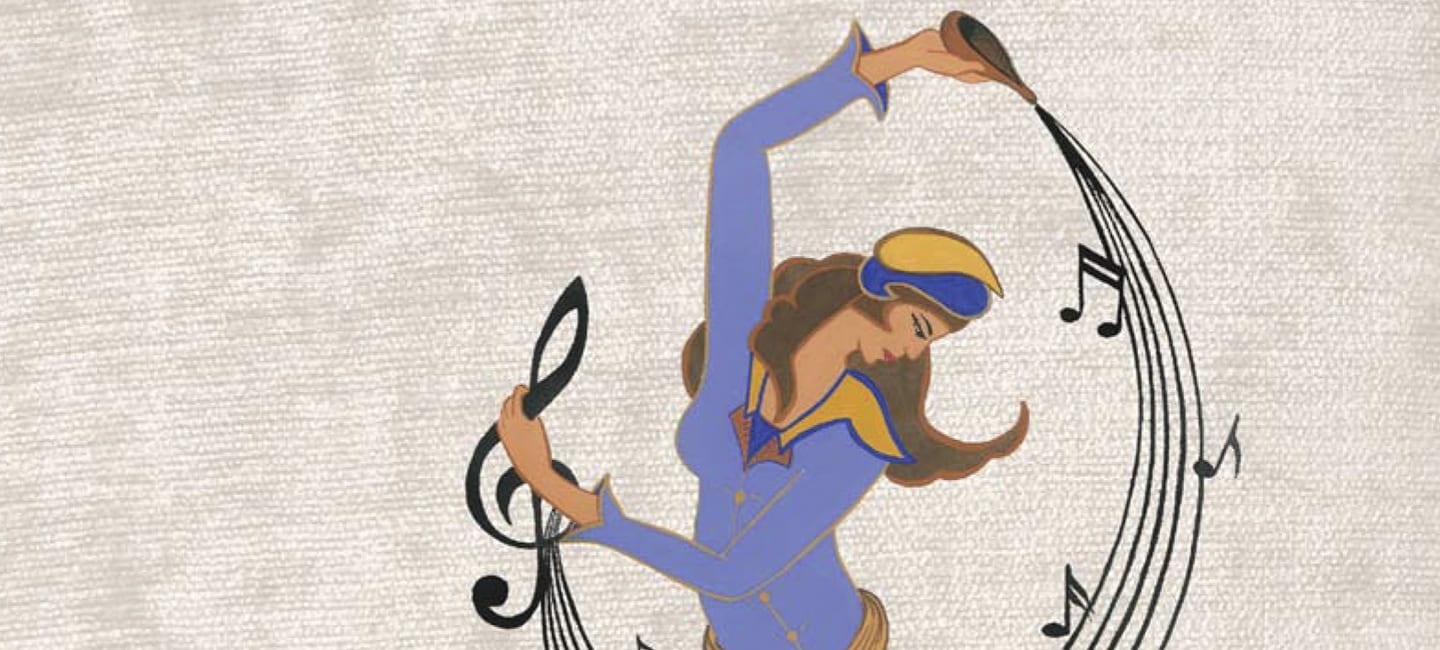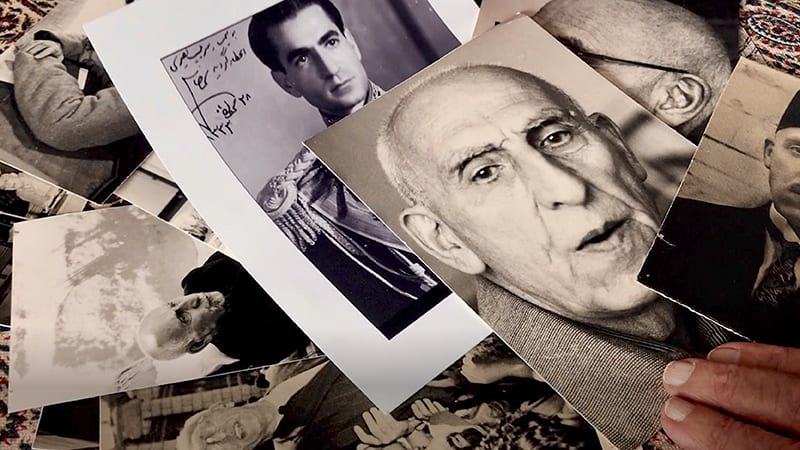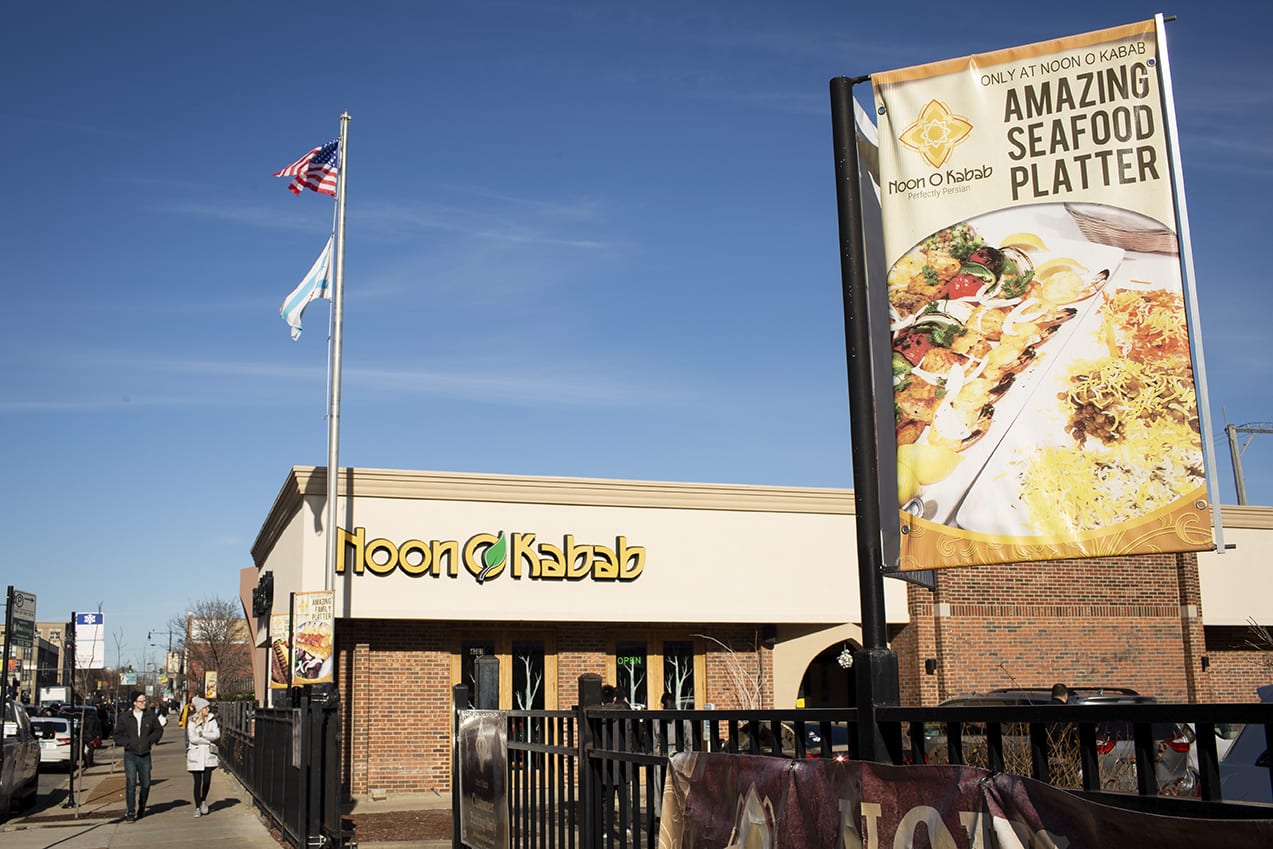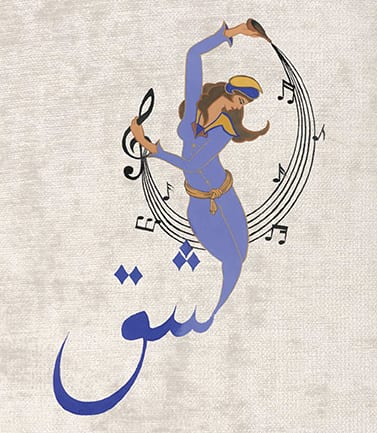
Con Estados Unidos e Irán intercambiando ataques, los habitantes de Chicago deberían aprovechar esta oportunidad para conocer mejor la historia y el arte iraníes, afirma Narimon Safavi.
El presidente Trump anunció esta mañana sanciones económicas adicionales contra el gobierno iraní tras un ataque con misiles iraníes contra tropas estadounidenses en Irak ayer. El ataque iraní fue una represalia por el asesinato por parte de Estados Unidos del líder militar iraní Qasem Soleimani el 3 de enero.
El reciente conflicto tiene sus raíces en décadas de tensiones entre los dos países y en una relación histórica compleja y polémica. Para los habitantes de Chicago que intentan comprender la historia de ese conflicto, lo mejor que pueden hacer es aprender más sobre el arte y la cultura iraníes, afirma Narimon Safavi, empresario iraní-estadounidense afincado en Chicago y colaborador habitual del antiguo programa de WBEZ. Programa de cosmovisión.
"Ve a verlo. Experiméntenlo. Financiadlo a través de organizaciones locales de Chicago", dice Safavi.
Safavi cree que la gran mayoría de estadounidenses e iraníes están interesados en la paz mutua. "Las personas no son sus gobiernos. Sin embargo, muchos estadounidenses no comprenden a Irán ni a sus diversos pueblos. Lo que realmente necesitamos ahora son más relaciones entre nosotros, no menos", afirma.
Aquí Safavi comparte cuatro maneras de aprender más sobre la cultura iraní en Chicago este invierno.
 Foto cortesía de Centro Cinematográfico Gene Siskel
Foto cortesía de Centro Cinematográfico Gene Siskel
1. Vea el documental "Golpe 53" en Festival de Cine de Irán
Sábado 8 de febrero, 19.00 h. y domingo 9 de febrero, 14.00 h.
El Festival se celebrará del 8 de febrero al 1 de marzo (consulte el Centro Cinematográfico Gene Siskel después del 23 de enero).
Gene Siskel Film Center de la Escuela del Instituto de Arte de Chicago, 164 N. State St., Chicago
Este año se celebra el 30 aniversario del Festival de Cine Iraní del Gene Siskel Film Center, un ciclo de tres semanas de películas de cineastas iraníes. "Suelen traer a cineastas de Irán para charlar y cenar, pero ahora, con la prohibición de viajar, no pueden hacerlo", dice Safavi. Este año el festival presentará ocho nuevas películas iraníes aclamadas por la crítica, entre ellas Teherán: Ciudad del amor y Encontrar a Farideh.
Los organizadores afirman que, desde la fundación del festival en 1990, Irán ha sido ampliamente difamado e incomprendido en Estados Unidos. "Estamos haciendo un importante esfuerzo cultural para dar voz a los cineastas iraníes a través de sus películas. Puedes ver una comedia asombrosa de Irán y cambiará tu perspectiva de lo que creías que era Irán", afirma Barbara Scharres, Directora de Programación del Gene Siskel Film Center.
El cine iraní es aclamado por la crítica y ha sido elogiado como uno de los cines más artísticos del mundo. Su rica tradición de cine independiente alcanzó relevancia mundial tras los estragos de la guerra Irán-Irak. "Al igual que el neorrealismo italiano tras la II Guerra Mundial, la industria cinematográfica iraní se vio debilitada en muchos aspectos por la guerra Irán-Iraq; sin embargo, dio origen a una de las comunidades creativas artísticas más importantes del mundo", afirma Safavi.
Safavi recomienda ver Golpe 53 en el festival de este año, que se estrenará la noche del estreno. Dirigido por Taghi Amirani, el documental detalla la "Operación Ajax", el golpe de Estado de 1953 orquestado por el M16 y la CIA para derrocar al Primer Ministro Mohammad Mosaddegh, elegido democráticamente, en favor de la restauración y consolidación del régimen monárquico del Sha Mohammad Reza Pahlavi en Irán. El golpe de 1953 se considera la primera vez que el gobierno estadounidense derrocó a un gobierno extranjero en tiempos de paz. Amirani participará en una sesión de preguntas y respuestas tras la proyección inaugural de "Golpe 53" el 8 de febrero.

Noon-O-Kabob. Foto de Michelle Kanaar
2. Disfrute de estofado fesenjan con arroz en la avenida Kedzie en Albany Park
Noon-O-Kabob, 4701 N Kedzie Ave, Chicago
Aunque muchos restaurantes iraníes de Chicago son muy de barbacoa -piense en el jugoso y carbonizado koobideh kebab-, la verdadera joya de la cocina iraní son los guisos, según Safavi. Fesenjan es un guiso iraní muy dulce y picante hecho con nueces molidas, sirope de granada y carne de ave. Safavi recomienda pasear por Kedzie, al sur de Lawrence Avenue, en Albany Park, y visitar este invierno el restaurante Noon-O-Kabab, de dos décadas de antigüedad, para degustar este guiso terroso acompañado de arroz al estilo persa. "En Irán, prepararlo es todo un arte. Para los iraníes, el arroz es como la pasta para los italianos", dice Safavi.

Foto cortesía del Departamento de Música de la UChicago
3. Escuchar música clásica en el Concierto persa de Middle East Music Ensemble
Sábado 29 de febrero, 15.00 y 19.00 horas
Logan Center, Performance Hall, 915 E. 60th St., Chicago
Entrada gratuita. Donativos en la puerta: $10 / $5 Estudiantes
El Middle East Music Ensemble explora el patrimonio cultural de la música no occidental de Oriente Medio y lleva actuando desde 1997 en Hyde Park. Los miembros del conjunto suelen tocar instrumentos tradicionales, como el qanun y el oud. "El conjunto interpreta música clásica persa, árabe y turca de todo Oriente Próximo, y los miembros aprenden los instrumentos de los demás. Es algo hermoso de ver", dice Safavi. Recomienda asistir a la edición de este año de Concierto Persa anual, que se celebrará el 29 de febrero y mostrará la música de Irán a través de los siglos.
Ver esta publicación en Instagram
4. Véase "Vidas afroiraníes" y quédese a debatir
Martes 11 de febrero a las 19.00 horas
Instituto Oriental de la Universidad de Chicago, 1155 E 58th St., Chicago
Aunque los persas son el grupo étnico más numeroso de Irán, hay una docena de etnias más en el país, como kurdos, mazanderanis y afroiraníes. Vidas afroiraníes‘ es un documental que explora la diversidad étnica de Irán a través del patrimonio y las tradiciones de su comunidad afroiraní. La directora y productora, Dra. Behnaz Mirzai, explora el patrimonio cultural, los ritos y los rituales de los afroiraníes en el sur de Irán, a lo largo del Golfo Pérsico. Safavi afirma que este documental es un reflejo de la singular tradición cultural africana en Irán, así como de la rica diversidad de la sociedad iraní en general. "Ver esta película corregirá enormemente la perspectiva de mucha gente sobre lo que es un iraní hoy en día. Muchos estadounidenses no comprenden la amalgama de razas, culturas e identidades que es hoy Irán. Esta película lo corrige en parte", afirma Safavi.
¿Quieres añadir algo a esta lista? Etiquétanos en las redes sociales @borderless_mag y compartiremos tus recomendaciones sobre destinos de cultura iraní en Chicago.
Borderless Magazine es su fuente de historias que trascienden fronteras. Usted puede apoye nuestro trabajo con una donación libre de impuestos hoy mismo.
Donar